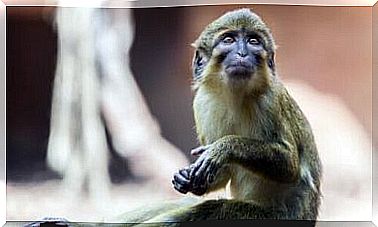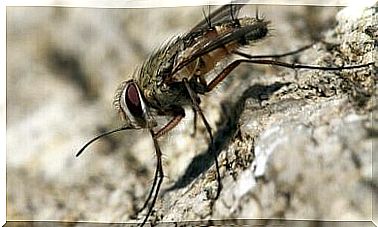Damon Diadema: Captive Care Of This Invertebrate
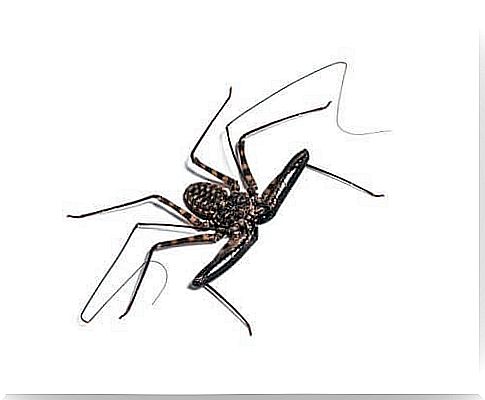
While the Damon diadem’s appearance may be a little intimidating, it is a highly prized animal among arthropod lovers. In fact, it’s perfect for those who love spiders or scorpions but are afraid of being bitten or stung.
The Damon diadema is an animal of tropical climates, so the terrarium where it will live in captivity must meet specific physico-chemical requirements. It’s not like raising crickets – diadem Damons have more demanding needs. Below, we give you all the tips on how to take care of this fascinating invertebrate in captivity.
Initial considerations
Amblipiges, the order of which the Damon diadem is a part, are considered vulnerable by the International Union for Conservation of Nature (IUCN). Among these we find the Charinus seychellarum or Phrynichus scaber . For this reason, it is necessary to ensure that the purchased animal comes from a captive breeding and has not been extracted from its natural environment.
Likewise, they are animals that reproduce easily and adapt very well to different climates. For this reason, it is very important to prevent them from escaping and, much less, to free them deliberately in the wild.
Due to their way of life, these animals require specific types of terrariums with certain characteristics that must be respected for the survival of the arthropod. Amblipiges have specific needs which, if not met, endanger the life of the animal.
Unlike other arthropods, these invertebrates are very peaceful and calm. They can be handled with care and without fear that they will harm us. However, they are very fast and could easily escape. Therefore, it is recommended to handle them only when necessary and with the use of a jar, for example when cleaning or changing the terrarium.
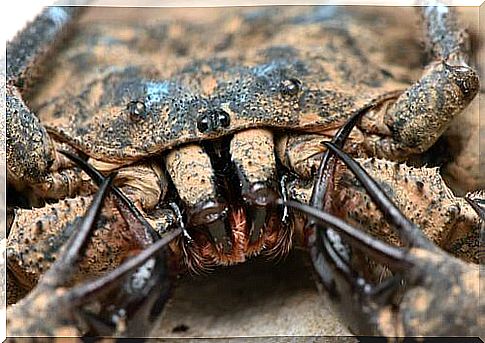
Captive care of the Damon tiara
The Damon tiara is an expert in escapism. Thanks to their flat body, these arthropods can slip into the smallest crevice. For this reason, when choosing the terrarium for this animal, its incredible capacity must be kept in mind.
What should the diadem Damon’s terrarium look like?
Usually, the body of the Damon tiara is not very large, measuring about three centimeters. However, the total leg span can be more than 20 centimeters. This, coupled with the fact that they are very active animals, means that they require a terrarium with a minimum volume of 20 liters for a single animal.
If you want to introduce more than one specimen, you will need to increase the terrarium capacity by 10 liters for each additional individual. Due to its ability to escape, it is also important that the terrarium is vertical, i.e. higher than it is wide.
Amblipiges are arboreal animals, so it is essential to place small trunks and tall branches in the terrarium. Also, like all arthropods, the diadem Damon makes various changes of its exoskeleton and for this it hangs from a high place. If there is no suitable position in the terrarium for this purpose, the animal cannot properly shed or fails to complete it and as a result may die.
The substrate must be at least 12 centimeters deep and must always be moist, but never wet. For this reason, the best type of substrate for these animals is coconut fiber. Indeed, this material retains moisture but is also easily aerated, which prevents the appearance of fungi. In addition, live plants can also be added which add a tropical look to the terrarium.
Last but not least, you should put a lot of hiding places in the terrarium, as it is a nocturnal species that hates light. The best option is always that of hollow cork logs arranged vertically. Instead, when using rocks, make sure they are well secured and stable to prevent them from falling and crushing the animal.
Environmental parameters
Although they come from tropical climates, these animals are actually nocturnal and spend the day hiding in crevices where humidity is high and temperatures are cool. Therefore, it is not necessary to have a heater in its environment.
However, it is best to place the terrarium in a cool place inside the house, with no direct sunlight and no heat source nearby, such as a heater. Even so, should the temperature occasionally rise above 30 ° C, this will not harm the Damon tiara.
The single most important environmental parameter for maintaining this species is humidity. In fact, inside the terrarium, the relative humidity should always be kept above 75%. To do this, it may be sufficient to spray a little water in the terrarium, without however wetting the substrate.
Feeding the Damon Tiara
Amblipiges are insectivorous animals. Usually, they are excellent cockroach exterminators, so many people don’t mind having them loose around the house, obviously when it comes to their place of origin.
These invertebrates must be fed live prey such as crickets ( Acheta domesticus ) or cockroaches ( Blatta lateralis ). The diadem Damon is a silent predator, so it will watch its prey completely still until it is close enough to capture it with its prehensile pedipalps. This behavior is fascinating.
An important thing to keep in mind is that at the time of the ambipligy exoskeleton moult and in the short term thereafter, these arthropods are totally vulnerable. Hence, the crickets and cockroaches that are normally their prey can become their predators. Therefore, during moulting these insects must be removed from the terrarium where the Damon diadema is located.
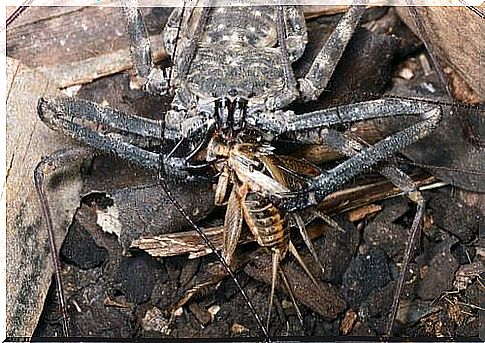
As you can see, amblipiges are very easy animals to care for. However, the stories of failure that are told in the terrarium environment are almost always due to a specific parameter: humidity. If you keep this value within optimal limits, the Damon diadema grows without major problems.


